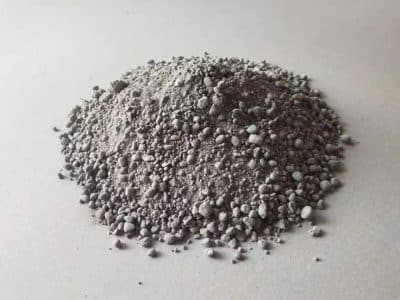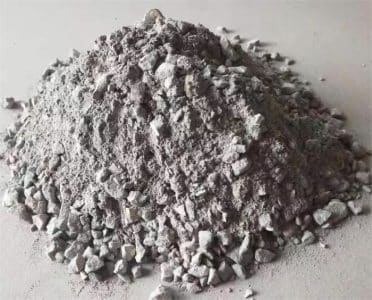In the high temperature industry, high aluminum refractory castable is widely used because of its excellent high temperature resistance and corrosion resistance. However, in the actual use process, due to various factors, high aluminum refractory castable may appear cracking phenomenon. This not only affects the effect of its use, but also may cause security risks to industrial production. So, in the face of high aluminum refractory castable cracking problem, how should we deal with it?

In order to give full play to the best performance of high aluminum refractory castable in the construction site, the “gray water ratio” must be strictly controlled. If there is too much water, the porosity will soar, the strength will decline significantly, the natural setting time will be prolonged, and the maintenance time will also increase. Conversely, if the amount of water added is too little, the fluidity will become extremely poor, it is difficult to achieve the compaction effect when vibrating, and it is easy to leave pores, caves and other defects. These defects can seriously weaken the strength of the material, making it vulnerable. Therefore, when deploying high-aluminum refractory castables, we must precisely control the “gray water ratio” to achieve the best state of the material. In this way, it can maintain excellent performance in both high and low temperature environments.
In the construction process, the stirring and vibration links of high aluminum refractory castables need to be strictly controlled. If the mixing time is too short, the particles in the material will not be fully mixed, and the formed pores and defects will lead to a significant decline in strength. If the vibration time is too long, it may cause the stratification inside the material. For high aluminum refractory castables, excessive vibration will destroy the uniformity of its internal structure, resulting in reduced strength, and may even make the material peel during use. Therefore, in the construction process, we must precisely control the stirring and vibration time of high-aluminum refractory castables. Only in this way can we ensure that the material achieves the best performance state and provides a solid fire protection for the construction project.
It should be noted that high-aluminum refractory castable is a high-performance building material, which has strict requirements during construction. First of all, it needs to be used up within 30 minutes after mixing, because after this period of time, the fluidity and plasticity of the material will be greatly reduced, affecting the construction effect. Second, the high aluminum refractory castable needs to be poured once to the specified thickness and height. If insufficient or excessive pouring, it will lead to a decline in the performance of the material, and may even cause safety hazards. In addition, the construction environment of high-aluminum refractory castables also has certain requirements, which usually need to be carried out at a temperature above 5 ° C. This is because the low temperature will slow down the solidification rate of the material, and even produce false coagulation phenomenon, which seriously affects the strength and durability of the material. Finally, the high aluminum refractory castable needs to be poured continuously, and the next layer should be fully poured before the initial solidification of the previous layer of castable. Only in this way can we ensure the smooth progress of the entire construction process.
The stripping time of high alumina refractory castable is very important. During the construction process, we must accurately grasp the golden moment. If the castable is rushed out before it is fully hardened, its strength will be greatly reduced and it will not meet the standard of use. So how do you determine this “golden moment”? The professional practice is to wait for the strength of the castable to reach a sufficient level, even if its corners will not be damaged during the release process. In order to ensure that the castable can be released smoothly, we also need to apply a layer of special release agent on the pouring surface of the mold. In short, controlling the stripping time of high alumina refractory castables requires rigorous operation and professional technology. Only in this way can we ensure that the quality and performance of the castables are at their best, providing a strong guarantee for the safety and stability of the project.
Why allow enough natural drying time for this material? In fact, this is to ensure that its internal moisture can be fully volatilized, so as to avoid major problems in the subsequent oven drying process. If the high aluminum refractory castable is rushed into the oven before it is completely dried, the moisture hidden in it will expand rapidly and rush to escape. In this case, the refractory layer may burst due to the rapid release of internal stress, causing serious damage. In order to avoid this situation, we need to give high aluminum refractory castables sufficient natural drying time. Therefore, the professional construction team will strictly control the maintenance time of high aluminum refractory castable to ensure that it has reached the best drying state before entering the oven drying stage.

In short, the cracking problem of high alumina refractory castable is a problem that needs to be paid great attention to. Through the analysis of the cracking causes and the formulation of treatment plans, we can effectively solve this problem and ensure the stable application of refractory castables in industrial production. At the same time, regular inspection, maintenance and technical support are also key measures to ensure the performance of high aluminum refractory castables.
